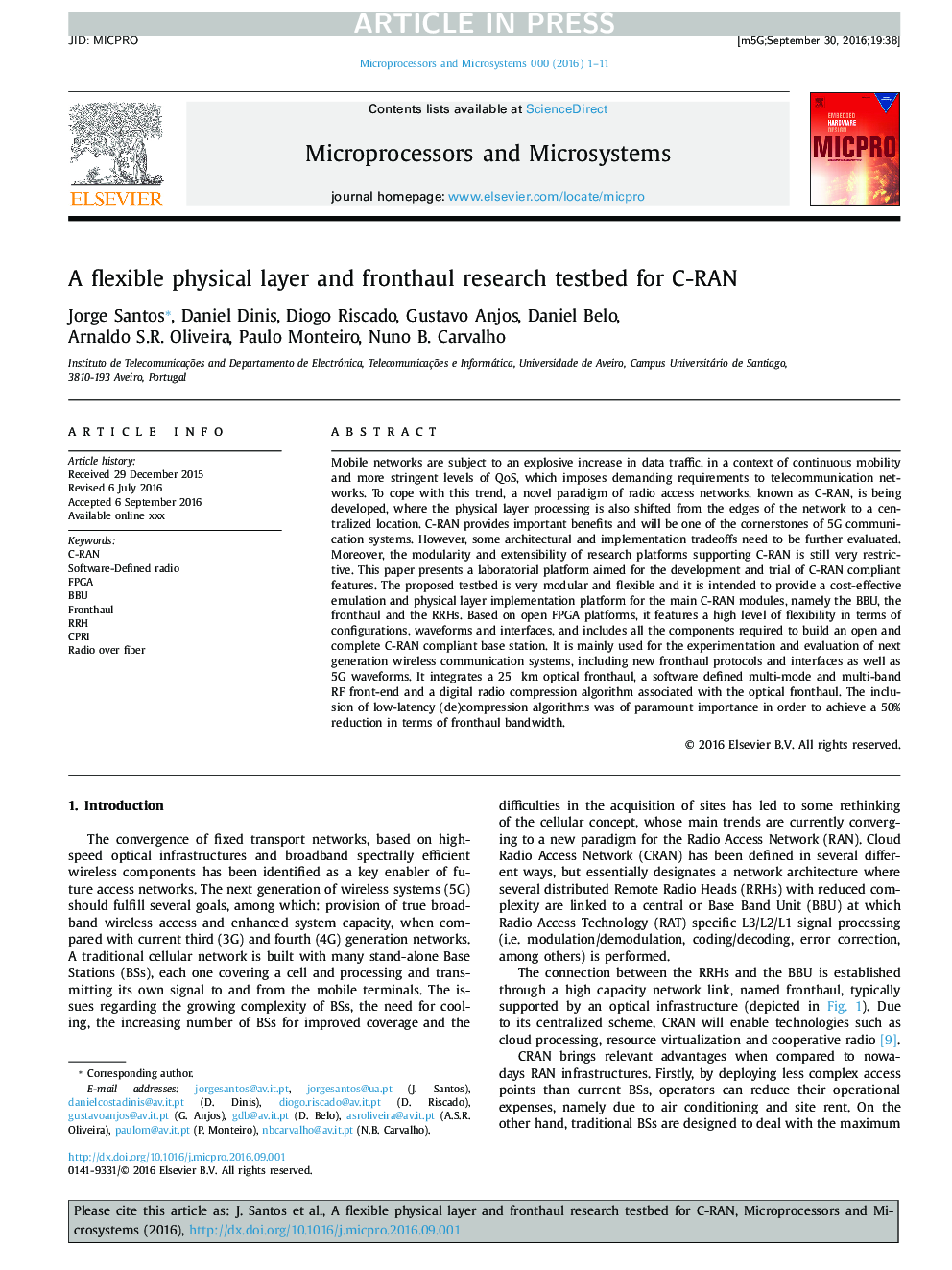| Article ID | Journal | Published Year | Pages | File Type |
|---|---|---|---|---|
| 4956671 | Microprocessors and Microsystems | 2017 | 11 Pages |
Abstract
Mobile networks are subject to an explosive increase in data traffic, in a context of continuous mobility and more stringent levels of QoS, which imposes demanding requirements to telecommunication networks. To cope with this trend, a novel paradigm of radio access networks, known as C-RAN, is being developed, where the physical layer processing is also shifted from the edges of the network to a centralized location. C-RAN provides important benefits and will be one of the cornerstones of 5G communication systems. However, some architectural and implementation tradeoffs need to be further evaluated. Moreover, the modularity and extensibility of research platforms supporting C-RAN is still very restrictive. This paper presents a laboratorial platform aimed for the development and trial of C-RAN compliant features. The proposed testbed is very modular and flexible and it is intended to provide a cost-effective emulation and physical layer implementation platform for the main C-RAN modules, namely the BBU, the fronthaul and the RRHs. Based on open FPGA platforms, it features a high level of flexibility in terms of configurations, waveforms and interfaces, and includes all the components required to build an open and complete C-RAN compliant base station. It is mainly used for the experimentation and evaluation of next generation wireless communication systems, including new fronthaul protocols and interfaces as well as 5G waveforms. It integrates a 25Â km optical fronthaul, a software defined multi-mode and multi-band RF front-end and a digital radio compression algorithm associated with the optical fronthaul. The inclusion of low-latency (de)compression algorithms was of paramount importance in order to achieve a 50% reduction in terms of fronthaul bandwidth.
Related Topics
Physical Sciences and Engineering
Computer Science
Computer Networks and Communications
Authors
Jorge Santos, Daniel Dinis, Diogo Riscado, Gustavo Anjos, Daniel Belo, Arnaldo S.R. Oliveira, Paulo Monteiro, Nuno B. Carvalho,
